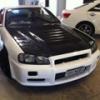Oil Control In Rb's For Circuit Drag Or Drift
Announcements
-
Similar Content
-
Latest Posts
-
To clarify, I meant nismo bushes, not control arms (don't even think that's a thing for my car). So the suspension specialist said, if I buy those nismo bushes which are perfectly centered it will cause my car to veer in one direction. Whereas he said the current offset bushes that I have were put in on purpose to fix that issue. This will be my third wheel alignment if I put these bushes in lol. My chassis is straight, all my rails are clean.
-
OK, well, in that case, the suspension specialist is either a moron, or you aren't understanding what he was trying to tell you. Nismo arms are not really different than stock arms. Both are fixed geometry. I don't know if the Nismo ones are a little shorter than the stockers (or perhaps even a little longer) or the same length, but....if you swap from stock to Nismo, whatever happens to one side will happen to the other side. It will not cause it to steer left or right. That is unless you have adjustable bushes in your stockers, and they happen to be adjusted to dial out some bent chassis shenanigans. But, if that were the case, you'd just put adjustables in the Nismo arms anyway, because Nismo arms are essentially just expensive stock arms. And doing a wheel alignment is just a weekly thing in my world. I have had the suspension apart so many times this year that I've lost count and just about worn out a torque wrench. I'm out in the shed right now cutting up some alloy section and making bases for my new stringline setup. Got to make new swivel plates next, then I'm good to do toe properly, as well as camber and bump steer.
-
Yeah, nah. Not a thing. The gasket between the top of the plenum and the runners is far more likely to blow out when it gets old, and not really at ~14 psi. These things have been run to double that for 30 years without that being a common thing.
-
I plan to pull the intake manifold off and check the gaskets, i read that the block to manifold gasket can blow over 14psi and when i picked up the car it was set to 1.2bar on the controller. Send the injectors out for cleaning. Ill also pull the cam covers off and do an inspection, check some valve lash. Someone also said that the timing belt can rub or vibrate against the belt cover and make that sound. Definitely need to get an AFR gauge on it, if it was lean idling im sure it wont be happy
-






Recommended Posts
Create an account or sign in to comment
You need to be a member in order to leave a comment
Create an account
Sign up for a new account in our community. It's easy!
Register a new accountSign in
Already have an account? Sign in here.
Sign In Now